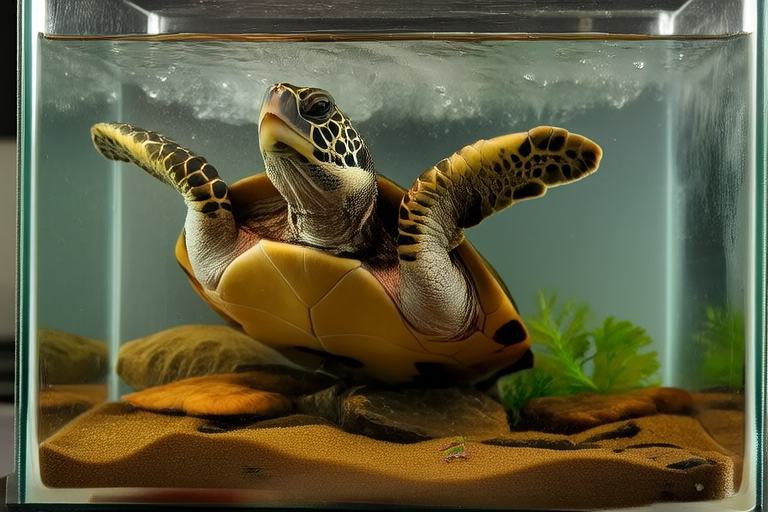How to Create the Perfect Habitat for Your Red-eared Slider Pet
Welcome to your ultimate guide on creating the perfect habitat for your red-eared slider turtle! Red-eared sliders (Trachemys scripta elegans) are popular aquatic turtles native to North America. These semi-aquatic creatures thrive in environments that mimic their natural habitats, which include slow-moving rivers, streams, and ponds. Providing an ideal living space for your red-eared slider is crucial for its health and well-being.
Understanding the Natural Habitat of Red-eared Sliders
Red-eared sliders are found in the wild in regions with warm climates, such as parts of the United States, Mexico, and northern South America. In these areas, they live in shallow waters with abundant vegetation and plenty of basking spots. Understanding these conditions helps us replicate them in captivity, ensuring our pets lead healthy lives.
Appropriate Tank Size
The first step in setting up a habitat for your red-eared slider is choosing an appropriately sized tank. A general rule of thumb is to provide at least 10 gallons of water per inch of shell length. For example, a juvenile slider with a 4-inch shell would need a tank of at least 40 gallons. As your turtle grows, you’ll need to upgrade to a larger tank.
For adults, a minimum of 60 gallons is recommended, but bigger is always better. A spacious tank allows your turtle ample room to swim and explore, reducing stress and promoting physical activity.
Water Quality Maintenance
Maintaining high water quality is essential for your turtle’s health. Ammonia and nitrite levels should be kept at zero, while nitrate levels should remain below 20 ppm. To achieve this, regular water changes are necessary. Aim to change 10-20% of the water weekly and perform a complete water change every two weeks.
Invest in a good quality filter that can handle the tank volume and provides mechanical, biological, and chemical filtration. This will help keep the water clean and clear, preventing harmful bacteria from building up.
Basking Area Setup
Red-eared sliders are semi-aquatic, meaning they spend time both in the water and out. Providing a comfortable basking area is crucial for their health. This area should be large enough for your turtle to fully extend its body and limbs. Place it on one end of the tank, allowing easy access from the water.
Use a sturdy platform, such as a turtle dock or a piece of driftwood, covered with a heat lamp. The basking area should be heated to around 85-90°F (29-32°C). Ensure that the surface is non-slip to prevent your turtle from falling into the water. Additionally, provide a UVB light source to promote calcium absorption and overall health.
Temperature and Lighting Requirements
Red-eared sliders are ectothermic, meaning they rely on external sources of heat to regulate their body temperature. Maintaining the correct temperature gradient within the tank is vital for their metabolism and digestion. Water temperatures should range between 75-80°F (24-27°C), while the basking area should be slightly warmer, as mentioned earlier.
UVB lighting is also critical for red-eared sliders. Exposure to UVB light helps turtles produce vitamin D3, which is essential for calcium absorption. Without adequate UVB exposure, turtles can develop metabolic bone disease. Use a UVB bulb designed for reptiles, and ensure it covers the entire basking area. Replace the bulb every six months, even if it still appears to be working, as UVB output diminishes over time.
Dietary Considerations
A balanced diet is key to keeping your red-eared slider healthy. In the wild, red-eared sliders are omnivores, feeding on a variety of plant matter, insects, and small fish. In captivity, aim to provide a diet that mimics this diversity.
- Protein Sources: Offer protein-rich foods, such as commercial turtle pellets, earthworms, crickets, and occasional feeder fish. Limit the amount of protein-based food to no more than 25% of the total diet.
- Vegetables and Fruits: Provide a wide range of vegetables and fruits, including leafy greens (kale, collard greens, romaine lettuce), carrots, squash, and berries. These should make up the majority of the diet, around 75%. Avoid iceberg lettuce, as it has little nutritional value.
- Vitamins and Minerals: Occasionally supplement your turtle’s diet with calcium and multivitamin powders. Dust the food lightly before feeding, especially for younger turtles whose shells are still developing.
Feed your turtle daily, offering only as much food as it can consume in 10-15 minutes. Remove any uneaten food promptly to maintain water quality.
Safety Tips
Creating a safe environment for your red-eared slider involves several precautions. First, ensure all tank decorations and equipment are securely anchored to prevent accidents. Use smooth rocks or sand for substrate, avoiding gravel, which can cause impaction if ingested.
Monitor your turtle’s behavior regularly. Any signs of lethargy, loss of appetite, or abnormal swimming patterns could indicate illness and warrant a visit to a veterinarian specializing in reptiles.
Lastly, never handle your turtle with bare hands, as they can carry salmonella bacteria. Always wash your hands thoroughly after handling your pet or cleaning the tank.
Conclusion
Creating the perfect habitat for your red-eared slider requires attention to detail and commitment to providing a healthy environment. By understanding the natural habitat of these fascinating creatures and replicating it in your home, you can ensure your pet leads a long, happy life. Remember, a well-cared-for red-eared slider can live upwards of 20 years, so investing time and effort into its care now will pay off in the future.
